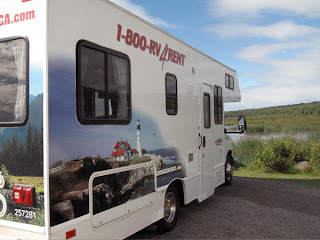Recently, Sen. Lisa Murkowski (R-AK) appeared in the news for purchasing property on the Kenai River at far below market value last year from Alaska businessman Bob Penney. It turns out, the plot is nearby one of her more notable earmarks: a three-mile stretch of road that abuts the property of about 50 residents, for which Murkowski has secured $6 million in federal funds since 2003.
If you read closely, you find out:
1. This was a project initiated by local home owners who didn't like the increase summer traffic going to a nearby federal wildlife refuge.
2. This probably wouldn't have affected commuting from LM's returned property or Penney's
3. Penney doesn't seem to be involved. The local advocates caught Murkowski's ear on a lucky plane trip.
4. It all began in 2002, well before, presumably, Penney offered the deal.
So, making a big deal of it - unless there's more to be uncovered - seems a like throwing meat to the lynch mob.
On the other hand, it sheds more light on the serendipitous way priorities are set and money is spent. A group of people living on a fairly remote road, though on or near the Kenai River, are upset about the dust and traffic on their road, that happens to end at a wildlife refuge and the Kenai River.
I can understand, especially in the age of Uncle Ted, their seeking federal money to help fix the road. But who sits down with the map of the whole state, its infrastructure, and the needs, and says, "These are the most critical roads, bridges, etc. that need money, that will give the most bang for the buck"? I know most federal and state agencies are asked to take that sort of approach in their budget planning. So it's the people whose project doesn't come in high on that list, who I suspect jump the queue and go directly to their legislators to get their projects funded. And with no one else to argue why the project isn't as important as those on the list, or should be funded some other way, the Senator can be persuaded and can also look responsive.
And those people are gonna vote for that sort of responsiveness.
One of the benefits of living in Alaska is that you can talk personally to your elective officials if you want. And when our Congressional delegation can slip in money that otherwise might have gone to Tennessee, well, then all the prioritized Alaska projects get funded, plus a few more. The voters of Tennessee should elect more capable Congressfolk. Or so goes the logic. I'd like to think about a legislator who asks, "So have you submitted this proposal to the DOT people who evaluate the state needs? If not, that wouldn't be fair to the people who have gone through the proper channels." That'll be the day.
But the facts presented in the story don't seem to have the taint that the headline and first paragraph suggest. Will this increase the value of Penney's property? Does the Alaska Fishing Classic use this road for their important guests? Maybe there is more here. But without that, no need for the teaser headline and opening paragraph.

























